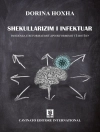Decision-making tools are needed to support environmental management in an increasingly global economy. Addressing threats and identifying actions to mitigate those threats necessitates an understanding of the basic risk assessment paradigm and the tools of risk analysis to assess, interpret, and communicate risks. It also requires modification of the risk paradigm itself to incorporate a complex array of quantitative and qualitative information that shapes the unique political and ecological challenges of different countries and regions around the world. This book builds a foundation to characterize and assess a broad range of human and ecological stressors, and risk management approaches to address those stressors, using chemical risk assessment methods and multi-criteria decision analysis tools. Chapters discuss the current state-of-knowledge with regard to emerging stressors and risk management, focusing on the adequacy of available systematic, quantitative tools to guide vulnerability and threat assessments, evaluate the consequences of different events and responses, and support decision-making. This book opens a dialogue on aspects of risk assessment and decision analysis that apply to real-time (immediate) and deliberative (long-term) risk management processes.
Cuprins
Preface.- Acknowledgements.- Part 1. Real-Time and Deliberative Decision Making: Needs and Applications.- Cognitive Aspects of Business Innovation; Scientific Process and Military Experience; I. Linkov et al.- A Synopsis of Immediate and Deliberate Environmental Assessments; S.M. Cormier.- Federal Decision Making for Homeland Security: Mapping the Normative/Descriptive Divide; L. Valverde, Jr., S. Farrow.- Group Information-Seeking Behavior in Emergency Response: An Investigation of Expert/Novice Differences; Q. Gu, D. Mendonça.- The Use of War Game Simulations for Business Strategies; B. Sheppard, D. Slavin.- An Integrated Approach for Flood Risk Management; J. Ganoulis.- Rationale and Development of a Scale to Communicate Environmental and other Community Risks; M.M. Plum.- Part 2. Risk Assessment for Emerging Stressors.- Estimation of Effect Thresholds for the Development of Water Quality Criteria; S. Cormier et al.- Comprehensive Risk Assessment: Applying the Cultural Property Risk Analysis Model to the Canadian Museum of Nature; R. Waller.- DPSIR and Risk Assessment of Dumped Chemical Warfare Agents in the Baltic Sea; H. Sanderson et al.- Social and Ecological Challenges within the Realm of Environmental Security; L. Kapustka et al.- Adaptive Management and the Comprehensive Everglades Restoration Plan; D. Guinto, R. Reed.- Part 3. Multicriteria Decision Analysis: Methodology and Tools.- Uncertainty Modeling with Imprecise Statistical Reasoning and the Precautionary Principle in Decision Making; I. Kozine.- SMAA-III: A Simulation-Based Approach for Sensitivity Analysis of ELECTRE III; T. Tervonen et al.- Attracting Additional Information for Enhancing the Uncertainty Model: Towards Improved Risk Assessments; V. Krymsky.- Modeling Stakeholder Preferences with Probabilistic Inversion: Application to Prioritizing Marine Ecoystem Vulnerabilities; R. Neslo et al.- Operations Research and Decision Analysis: Software Tools and Applications; D. Strimling.-Multicriteria Decision Analysis and Life Cycle Assessment: Applications under High Uncertainty; K. Rogers et al.- Decision Evaluation for Complex Environmental Risk Networked Systems (DECERNS): Cost/Benefit Module and Application to Wildlife Reserve Management; A. Grebenkov et al.- Sustainable Management of Water Resources and Minimization of Environmental Risks: A Multi-Portfolio Optimization Model; E. Levner et al.- Avoiding MCDA Evaluation Pitfalls; J. Barzilai.- Part 4. Applications of Multicriteria Decision Analysis for Environmental Stressors.- Approaches Used for Remedy Selection at Contaminated Sediment Sites: Analysis of Two Case Studies; V.S. Magar et al.- Multicriteria Decision Analysis for Choosing the Remediation Method for a Landfill Based on Mixed Ordinal and Cardinal Information; R. Lahdelma, P. Salminen.- Ordinal Measurements with Interval Constraints in the EIA Process for Siting a Waste Storage Area; R. Lahdelma, P. Salminen.- Balancing Socioeconomic and Environmental Risks and Benefits under Multiple Stressor Conditions: A Case Study of the Powder River Basin in Wyoming; S. Shalhevet.- Risk Assessment of Radionuclide Contamination in Potable Water; A.A. Bayramov, S.M. Bayramova.- Assessment of Groundwater Contamination Risk from Nonchemical Stressors in Wastewater; N. Haruvy, S. Shalhevet.- Wastewater Reuse: Risk Assessment, Decision Making, and Environmental Security: A Technical Report; M.K. Zaidi.- List of Participants.- Author Index.-











